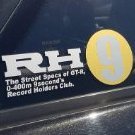R34 Gtr Build
Announcements
-
Similar Content
-
Latest Posts
-
By Dose Pipe Sutututu · Posted
Increasing overlap will bring the torque down earlier (and make your idle sound sick lol). Worth a shot (if you dyno time) to experience a bit (providing you are confident your valves won't kiss your pistons). Is to just take off 5 degrees across the boosted area of the map, and then retard the exhaust cam let's say, 3 degrees at a time and then overlay all the runs with VCT on all the way and VCT off as soon as you make positive pressure. Ideally you would have a total of 6x overlays to looks at 0 exhaust & VCT off once manifold pressure is +ve 0 exhaust & VCT on all the way -5 exhaust & VCT off once manifold pressure is +ve -5 exhaust & VCT on all the way -10 exhaust & VCT off once manifold pressure is +ve -10 exhaust & VCT on all the way Just leave your O2 wideband closed loop on for all of the boost area & RPM, and hopefully there isn't too much fuel correction needed and the Haltech is fast enough to compensate (I do this, then apply the correction to the main table). Getting that overlay data should give you a good indication of what to aim for. -
So, my main limitation here is that the car does not have an oil pressure sensor by default, just a switch. As part of my tune I bought an oil pressure sensor upgrade so I now have access to oil pressure levels and logging rather than just the boolean behaviour of the switch but this means I need to use the tuning app to display this value. So, this rules out using any other app on the iPad. The app will also flash when pressure drops which is a nice feature. I have replaced the centre screen with an Android one, which is awesome for Android Auto, but I think it might be too far away and out of my line of sight. I might add some gauges to it this weekend and just see. I guess if its just temp and oil pressure I can make them massive! 🤣
-
This is what the look like normally. Except we only got the 2 doors locally
-
Back pressure is not really a function of the exhaust itself, but the turbine/housing. So the question/point remains valid. I would be fitting an EMAP tapping point and seeing what is going on in the exhaust manifold before committing to throwing boost at it. Flow. No intercooler is actually rated for continuous operation at any power level wrt temperatures, as they are no actually capable of shifting the required amounts of heat on a continuous basis. They get hot during a pul, then dump some of that heat into the external air (and some back into the internal air) during off load moments/periods). You probaby do need a bigger core, given the power level you're already at is somewhat above the "rating" of the cooler. Put pressure tapping points either side of the core (which possibly you already have, if you have a boost source near the compressor outlet and tapping near the throttle for existing purposes) and report on delta P across the core. I haven't done the mass flow calculation to see where you would be sitting on the compressor map at the ~450is rwkW level we're talking here, but if you look just at the PR you're running at, which is ~2.8-2.9, then you have a really really wide swath of the compressor map to run in, and so long as you were making between about 45-75 lb/min of flow, you should have really good comp efficiency, with the ideal being betweem 55 and 65. I can't see the need to shift drastically on the map to get better results.
-
Welcome 🙂 The ER34 wheels and slight lowering suit the R33 sedan really well. I'm firmly in the 'keep it stock, at least on the outside' camp.
-








Recommended Posts
Create an account or sign in to comment
You need to be a member in order to leave a comment
Create an account
Sign up for a new account in our community. It's easy!
Register a new accountSign in
Already have an account? Sign in here.
Sign In Now